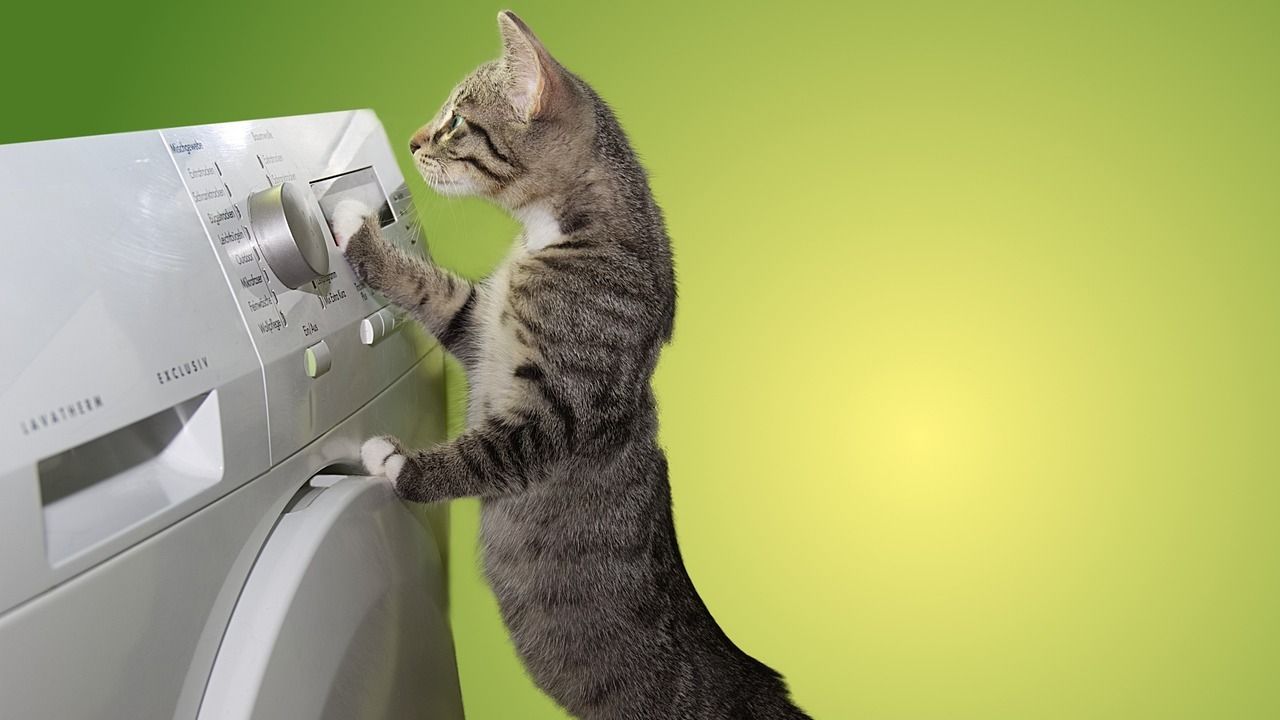
The Comprehensive Guide to a Non-Spinning Dryer: Causes and Solutions
Every homeowner understands the convenience of a fully functional clothes dryer. This appliance, when operating correctly, provides freshly dried clothes at a moment’s notice. However, when your dryer ceases to spin, it can create a significant disruption in your daily routine. Not only do you end up with damp clothes, but the malfunction can also lead to excessive wrinkling of garments. This comprehensive guide will help you identify the reasons why your dryer might stop spinning and provide potential solutions to get your appliance back on track.
1. Broken Drive Belt
The drive belt, a critical component of your dryer, is often the first suspect when the drum stops spinning. This belt, usually made of rubber, loops around the drum, a tension pulley, and the drive motor, creating the necessary movement. Over time and with continuous use, the belt experiences wear and tear, which can lead to it breaking.
**Fix:** Before attempting any repairs, ensure you disconnect the dryer from the power source for safety reasons. Then, access the belt by removing the dryer’s front panel or back access panel. This depends on the model of your dryer. A thorough inspection of the belt will reveal if it’s worn out or snapped. If so, replacement is necessary. While it’s possible to undertake this task using a replacement kit and basic tools, it might be complicated for the uninitiated. If you’re not comfortable performing this repair, consider hiring a professional to ensure proper installation.
2. Worn-out Drum Rollers
Dryers, particularly large-capacity models, often use drum rollers or wheels to support the drum from the front. If these rollers become worn out or damaged, they might not spin freely, which could inhibit the drum’s movement and prevent it from spinning.
**Fix:** Again, ensure the dryer is disconnected from its power source before commencing any repair work. After removing the dryer’s front panel, you can access the drum rollers. Inspect them for signs of wear and tear, such as flat spots or wobbling. If they are worn out or damaged, replacement is necessary. If the rollers seem to be in good condition but aren’t spinning freely, try lubricating them with a few drops of white lithium grease. This can help them spin smoothly.
3. Faulty Drum Bearing
The drum bearing supports the rear of the dryer drum. If it becomes worn out, or doesn’t spin smoothly, it could impede the drum’s movement, causing the dryer to stop spinning.
**Fix:** Accessing the drum bearing requires going to the rear of the dryer, which can be a complex task. Make sure you’re comfortable performing this repair. If the drum bearing is worn out or not rotating smoothly, replacement is needed. Given the complexity of this task, which often involves disassembling the entire dryer, it’s recommended to enlist the help of a professional.
4. Damaged Motor
The drive motor is the powerhouse of your dryer. It’s responsible for turning the drum and the blower wheel to exhaust the air. If the motor seizes up, is overloaded, or the bearings run dry or become worn, it can prevent the drum from spinning.
**Fix:** If the motor is making unusual noises, like humming or buzzing, or doesn’t run at all, even after resetting the overload switch (if your model has one), it might need to be replaced. Replacing a dryer motor is a challenging task that involves dealing with wiring and moving parts. Due to its complexity, it’s often best left to a professional.
5. Worn Out Idler Pulley
The idler pulley keeps the drive belt taut while the dryer operates. This prevents the belt from slipping on the motor pulley or the drum. Over time, the idler pulley can wear out, or the spring attached to it can break. This could cause the belt to slip, and the drum to cease spinning.
**Fix:** To check the idler pulley, you’ll need to remove the front panel of the dryer or the back access panel, depending on your model. Once you’ve located the idler pulley, check it for wear or damage. If the idler pulley is worn, damaged, or doesn’t spin freely, it should be replaced. Also, check the spring to ensure it’s still providing the necessary tension. If it’s stretched out or broken, it will need to be replaced as well. Replacing the idler pulley or spring can be a moderately difficult task, but with some patience and the right tools, you can accomplish it. If you’re uncomfortable performing this repair, consider seeking professional help.
6. Problem with the Door Switch
The door switch is a safety feature that signals to the dryer when the door is open or closed. If the switch is faulty, the dryer might assume the door is open and stop the drum from spinning.
**Fix:** You can test the door switch with a multimeter for continuity – a continuous electrical path present in the part. To do this, disconnect the dryer from the power source, locate the door switch, and remove the wires connecting to it. Then, use a multimeter to check if the switch has continuity. If the door switch does not have continuity when activated, it needs to be replaced. While testing and replacing the door switch is a simple task, remember to always disconnect the dryer from the power source before starting any repair.
7. Issues with the Start Switch
Another potential issue could be with your dryer’s start switch. If the start switch is faulty, the drive motor might not run, preventing the drum from spinning.
**Fix:** To test the start switch, you will need a multimeter. Remove the switch and set the multimeter to the Rx1 setting. Touch the probes to the switch’s terminals while pressing it. If the multimeter reading doesn’t change, it signifies that the switch lacks continuity and you’ll need to replace it. Replacing the start switch can be a relatively straightforward task, but if you’re unsure, it’s best to hire a professional.
8. Failed Dryer Belt Switch
Some dryers have a belt switch that turns off the machine if it detects the belt is broken. If this switch fails, it could cause the dryer drum not to spin.
**Fix:** You can use a multimeter to test the switch for continuity, similar to how you tested the door switch. If the switch doesn’t have continuity, it should be replaced. While testing and replacing the belt switch is typically a simple process, it’s essential to ensure your safety by disconnecting the dryer from the power source before starting any repair.
9. Problem with the Capacitor
In some dryers, especially older models, a start capacitor is used. This gives a boost to the motor when the dryer starts to ensure it runs efficiently. If the capacitor is faulty, the motor may not have enough power to run, stopping the drum from spinning.
**Fix:** Checking a capacitor should be done very carefully because they can hold a charge even when power is disconnected. It’s recommended to hire a professional to test and replace a faulty capacitor. They have the necessary experience and safety tools to handle this potentially dangerous task.
10. Control Board Issues
In some modern dryers, a control board is used to control the different components of the dryer. If the control board is faulty, it could send incorrect or no signals to the motor, preventing the drum from spinning.
**Fix:** Diagnosing a faulty control board can be quite tricky as it involves checking the circuits and the continuity of the board. If you suspect the control board is the issue, it’s best to call in a professional. They have the expertise to handle the complex circuits and can ensure the correct diagnosis and replacement, if necessary.
In conclusion, a non-spinning dryer drum can be a symptom of various problems, from simple wear and tear of parts like the drive belt and drum rollers to more complex issues like a faulty motor or control board. While some of these issues can be addressed with a bit of DIY skill, others require professional intervention for safe and effective resolution.
Performing regular maintenance and promptly addressing minor issues can help prevent more serious problems down the line. This includes cleaning the lint trap regularly, not overloading the dryer, and occasionally checking critical components like the drive belt and drum rollers for signs of wear and tear.
It’s also important to understand that while dryers are designed to last, they do have a finite lifespan. If your dryer is older and frequently experiencing problems, it might be more cost-effective to replace it rather than continue with repairs. New models are often more energy-efficient, which can lead to savings on your utility bills over time.
Remember, safety should always be your primary concern when dealing with appliances. Always disconnect your dryer from its power source before attempting any repairs, and don’t hesitate to seek professional help if you’re unsure about a repair process. By understanding the various reasons why a dryer might stop spinning and how to address them, you can ensure your appliance continues to serve you well for years to come.
Appliance repair, Appliance repair in Burnaby, Appliance repair in New Westminster, Appliance repair in Vancouver, Appliance repair near me, Dishwasher repair, Doctor appliance, Dryer repair, Freezer repair in Burnaby, Fridge repair in Burnaby, Oven repair, Port Coquitlam, Port Moody, Refrigerator repair in Burnaby, Stove repair, Washer repair, Washing machine repair
